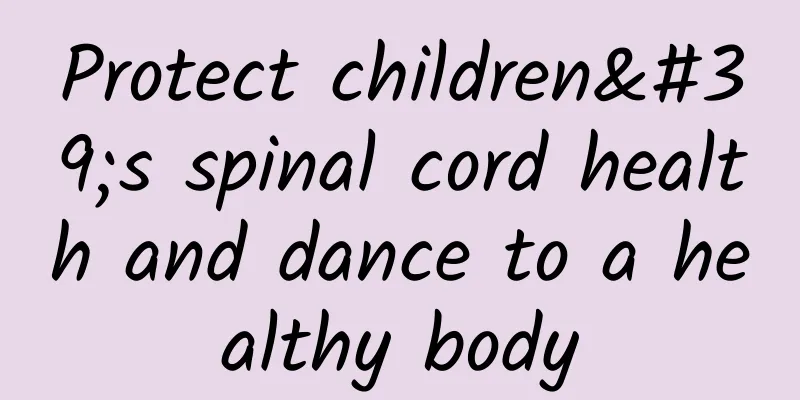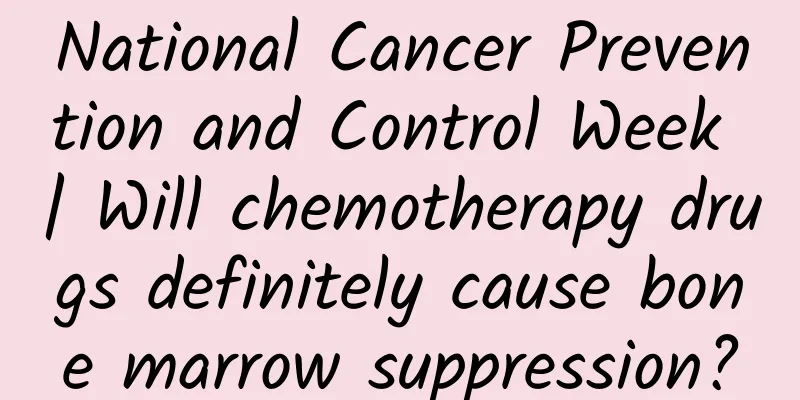Protect children's spinal cord health and dance to a healthy body

|
Author: Yuan Yuan, Beijing Boai Hospital Reviewer: Zhou Hongjun, Chief Physician, Beijing Boai Hospital Dancing is a favorite activity for many children. It not only cultivates children's artistic talents, but also promotes physical flexibility and coordination. Many parents send their children to dance training institutions with the original intention of "exercise and shape temperament", but many parents do not understand that "bending back", a basic dance skill, is a dangerous action that may cause serious consequences to children's spinal cord health. In recent years, news about "bending back while dancing causes spinal cord injuries in children" has frequently appeared, which has aroused people's attention to protecting children's spinal cord health. Figure 1 Copyright image, no permission to reprint 1. Risk of spinal cord injury in dancing The spinal cord is part of the human nervous system and is responsible for transmitting commands from the brain and receiving sensory signals from various parts of the body. It is located in the spine and is very fragile. If the spinal cord is damaged, it can lead to serious health problems such as limb paralysis, loss of sensation, and urinary and bowel dysfunction, which seriously affect children's normal life. Spinal cord injury in children caused by dancing is called pediatric acute hyperextension spinal cord injury (PAHSCI), which refers to acute thoracic and lumbar spinal cord injury without fracture and dislocation after repeated or continuous hyperextension of the spine. The symptoms are mainly lower limb pain, paresthesia and weakness during repeated or continuous hyperextension of the spine, or lower limb pain, paresthesia and weakness after falling during repeated or continuous hyperextension of the spine. Usually, soreness and discomfort in the waist, back pain, leg pain, numbness or weakness in the lower limbs are its early symptoms. Most patients can still move their lower limbs and stand and walk after the sudden onset of the above symptoms. Then, within 10 minutes to half an hour, neurological symptoms progressively worsen, and paraplegia such as lower limb immobility, urinary retention or incontinence, and bowel disorders appear. Most patients show complete spinal cord injury after admission, that is, loss of sensation and motor function below the injury plane, urinary retention, and bowel and bladder dysfunction. A few patients with incomplete injuries may develop spastic paralysis in the later stage, which seriously affects the normal life of children. Most patients suffer from lifelong disability, which brings a heavy economic burden to patients, their families and society. 2. Symptoms and consequences of acute hyperextension spinal cord injury in children The "Guidelines for the Diagnosis and Treatment of Acute Hyperextension Spinal Cord Injury in Children" published in 2022 pointed out that the injury mechanism of this disease is still unclear, and the possible pathogenesis is speculated to be: ① Spinal cord vascular injury, spinal venous return obstruction leads to spinal venous hypertension, spinal arteriovenous pressure gradient changes, leading to insufficient blood supply to the spinal cord, ischemic edema, spinal meningeal syndrome or intramedullary hypertension, and finally spinal venous infarction; ② Damage to the arteries that nourish the spinal cord leads to insufficient blood supply to the spinal cord; ③ Embolism of the spinal blood vessels leads to spinal cord infarction, such as venous thromboembolism, spinal vascular fibrocartilage embolism, etc.; ④ Hyperextension of the spine leads to violent traction injury to the spinal nerves; ⑤ When the spinal cord is hyperextended, the vertebral body is instantly dislocated, and the interspinous ligaments protrude into the vertebral canal, causing multiple compression injuries to the spinal cord. Current studies have shown that the spinal cord is stretched after hyperextension of the spine in children, especially the longitudinal traction injury at the junction of the conus medullaris and cauda equina, transient dislocation of the apical vertebra and lateral compression injury of the anterior and posterior ligaments during hyperextension, leading to local small vein/arterial damage to the spinal cord, venous return obstruction and spinal venous hypertension, causing insufficient blood supply to the spinal cord, ischemic edema and a vicious cycle, resulting in spinal cord cavity syndrome or intramedullary hypertension, leading to spinal cord infarction. There is currently no effective specific treatment for acute hyperextension spinal cord injury in children. The prognosis is poor and there are many complications. The goal of treatment is to reduce the degree of spinal cord injury, prevent further injury, and promote recovery. Therefore, preventing the occurrence of spinal cord injury is the best strategy. Because children's spines are immature and vulnerable to injury, the dance, gymnastics and other sports guidelines in North America, Australia and India explicitly prohibit children from participating in sports or activities that excessively extend the spine. For children under 10 years old, it is not recommended to participate in such repeated or continuous hyperextension spinal exercises as dance back training. Figure 2 Copyright image, no permission to reprint 3. How to protect children’s spinal cord health? In addition to "bending back", somersaults, somersaults and other movements may also cause spinal cord injuries. In order to protect the health of children's spinal cords, correct teaching methods and safety guidance must be introduced in dance education. Children who participate in dance training, their guardians, teachers and institutions of dance training institutions should be aware of the risks of bending back in dance, and take measures to prevent the occurrence of acute hyperextension spinal cord injuries in children or treat them as soon as possible after they occur. First of all, parents should choose a formal dance training institution to ensure that their children receive professional guidance and training. These institutions should have qualified dance teachers who can guide children to correctly master the range of motion and posture of dance movements. They should pay close attention to the physical condition and feedback of the children, and guide the children to complete the movements step by step, avoiding rushing for success. Parents also need to pay attention to the health status and physical reactions of their children, communicate with the dance instructor in time, and ensure that the children are properly protected and guided during dance training. Secondly, it is not recommended for children under 10 years old to participate in training that requires repeated or continuous hyperextension of the spine, such as dance bending. Children's spines are immature and more susceptible to injury than adults. Dance coaches and guardians of children participating in dance training should be informed that repeated or continuous hyperextension of the spine, such as dance bending, may cause accidents and may lead to spinal cord injuries in children. In addition, in dance training, attention should be paid to moderate range of motion, proper warm-up and stretching. Warm-up can improve the body's flexibility and coordination and reduce the risk of injury. Stretching can increase muscle flexibility and prevent muscle strain and joint sprain. Dance teachers should understand the correct warm-up and stretching methods and guide children to perform these movements correctly. If a child develops symptoms of hyperextension spinal cord injury during dance training or performance, such as numbness and weakness in the lower limbs, the child must stop training and activities immediately and lie flat to rest. The child must not sit up or stand to prevent further aggravation of the spinal cord injury or secondary injury, and must go to a specialist hospital immediately for medical treatment. Early diagnosis and treatment can reduce the severity of the injury and increase the chance of recovery. In conclusion, dance has a positive impact on children's physical and mental development, but we must also be aware that dance movements may pose a potential threat to spinal cord health. In order to protect children's spinal cord health, parents and dance training institutions should strengthen the publicity and training of relevant knowledge, take effective preventive measures, and pay close attention to children's dance activities. Only through reasonable training and attention to safety can children grow up healthily in dance and show a beautiful posture. Let us work together for children's dance safety and protect their spinal cord health. |
<<: Eat a lot but still lose weight? Beware of hyperthyroidism
Recommend
Will threatened abortion cause belly button pain? What are the most common symptoms?
Belly button pain caused by threatened abortion g...
Is breast enhancement essential oil harmful to the body?
When it comes to a woman's figure, a curvy fi...
Is it normal to have less dark brown bleeding seven days after medical abortion?
Medical abortion is a method of abortion that cau...
The formula for calculating normal body weight
No matter what age women are, they are very conce...
Leucorrhea is brown
Leucorrhea is a normal physiological phenomenon o...
How to detoxify birth control pills
It is inevitable that there are toxins in the hum...
New local cases of COVID-19 infection in Beijing and health tips
From 0:00 to 24:00 on June 7, there were 7 new lo...
The child is under 6 years old, so he won’t be nearsighted? Wrong!
According to data released by the National Health...
Is breast pain a symptom of pregnancy?
Many women do not understand the symptoms of preg...
My period is coming and I have breast pain
Menstruation is an important sign of maturity in ...
Women sneezing signs
Sneezing is a very common phenomenon that happens...
Pregnant 4 weeks stomach pain like dysmenorrhea
Giving birth is a joyous event for both a woman a...
Vaginal inflammation irritation lumps
Vaginitis is a common gynecological disease among...
What are the symptoms of migraine? How are migraines treated?
Migraine is a very common disease in life. This d...









